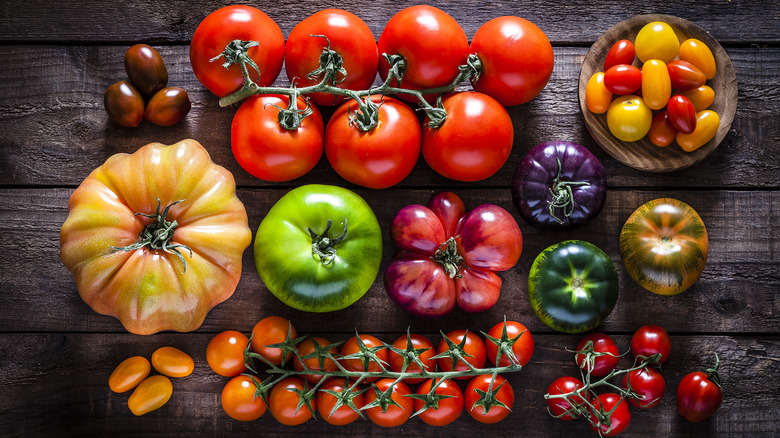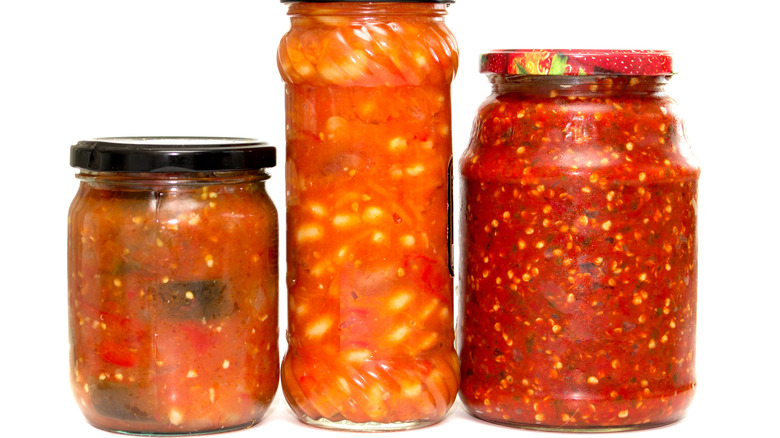The Step You Should Never Skip When Making Home-Canned Tomato Soup
Canning tomato soup at home is a fun and fulfilling process, but you must make food safety a priority. For instance, lemon juice and other types of citric acids are an essential component of canning tomato soup, as acidic ingredients deter the growth of harmful bacteria. In this case, bottled lemon juice is the preferred option, as you can rest assured that the acid concentration will be the same from bottle to bottle. The same can't be said for fresh lemons, as their acidity may vary and not offer the bacteria-fighting protection of bottled lemon juice.
Commercially manufactured lemon juices undergo a consistent acidification process, which means their acid content will never be below 4.5 percent. On the other hand, the acid content of fresh lemons varies according to factors like soil condition, climate, and lemon variety. These variations mean that fresh lemons may not have the right acidity to maintain a consistent pH level when canning. Along with using bottled lemon juice, tomato selection can also have a huge impact on the finished product.
How to choose the best tomatoes when canning soup at home
Paste-style tomatoes, meaning the varieties commonly used to make tomato paste, are usually preferred for home canning. These tomatoes have a thick texture and fewer seeds than other varieties, so they're easier to work with when it comes to the home canning process. There are many different types of tomatoes that fall into the paste category, including San Marzano, which is a variation of plum tomato.
Saucy tomatoes, a variety first established in the U.S., are another good option for canning soup. These tomatoes are related to Roma types and are often small, but available in sizable clusters. If you want something a little off the beaten path, Italian Gold tomatoes are a great selection. Another type of paste tomato, Italian Gold is orange in color and has a sweeter flavor than other types of tomatoes. Once you've got your bottled lemon juice and have chosen your preferred tomatoes, you can finally get to canning your soup.
Tips for canning tomato soup at home
Begin the canning process by washing your tomatoes to ensure no contaminants make their way into the jars. When it comes to the canning recipe, be sure to follow the instructions to the letter. Unlike other types of cooking, canning recipes contain important steps to ensure food safety. Tweaking these steps or adding new ingredients can affect the process and result in soup that is not safe to eat.
For instance, thickeners, dairy products, or rice should never be added prior to canning. These ingredients can impede the even distribution of heat throughout the jar, which contributes to a higher risk of bacterial growth. Also, when filling jars, it's important to leave about an inch of empty space at the top before sealing with a lid. Space at the top of the jar ensures a tight seal and prevents the soup from expanding up and out of the container, thereby exposing the contents to air. With the proper approach and ingredients, you can rest assured of a delicious and wholesome home-canned tomato soup.


